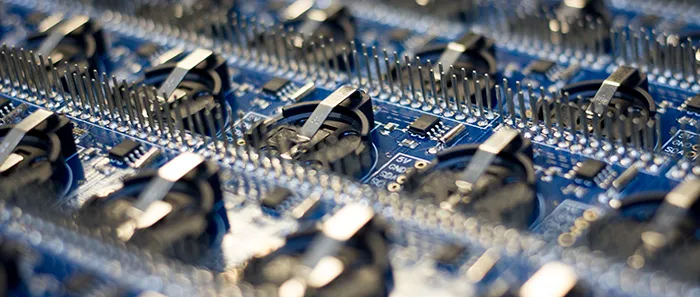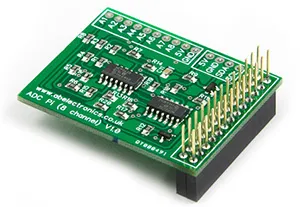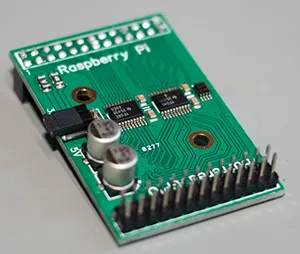1st Birthday for AB Electronics UK

Today marks the first anniversary of the launch of AB Electronics UK.
The business started as the result of a post on our project blog for a Raspberry Pi ADC board and the Raspberry Pi Solar Data Logger (which is still running 24/7). The post was picked up by Hackaday and this resulted in tens of thousands of new visitors to the blog and hundreds of requests for them to buy an ADC board to go on the Raspberry Pi. The idea to move away from our web design business to running our own e-commerce shop was born!
 This first-generation Raspberry Pi ADC was the first board we had produced using surface mount chips, all previous projects had always used though hole parts. The ADC Pi version 1 used two 16-bit ADC chips and the board layout was auto-routed using Diptrace PCB software. This was the first and last time we designed a board using an auto-router, all of our boards since then have been routed manually.
This first-generation Raspberry Pi ADC was the first board we had produced using surface mount chips, all previous projects had always used though hole parts. The ADC Pi version 1 used two 16-bit ADC chips and the board layout was auto-routed using Diptrace PCB software. This was the first and last time we designed a board using an auto-router, all of our boards since then have been routed manually.
We initially contacted several UK-based PCB manufacturers with the view to having the boards made for us and then resold on our online shop but the cost to build small quantities of less than 2000 made the boards far too expensive to sell. We then contacted Quick-teck who specialise in PCB manufacture and they were able to give us a very competitive price to have 200 bare PCB boards made.
The boards arrived after two weeks and we started to build them placing all the components by hand using tweezers and then soldering the boards in a basic Chinese reflow oven purchased from eBay. The reflow oven was of very poor quality and the first few boards had a lot of failures due to very uneven heating during the soldering process.
We quickly replaced the Chinese reflow oven with a larger desktop CIF FT 02 supplied by PM Tech who was very helpful and even offered to come down to see us in person to discuss our requirements.
With the new reflow oven working the previous soldering issues were resolved and the oven has been working without any failures since.
We didn’t think that the first 200 boards would sell very quickly but three very busy weeks after we launched our website they had all sold and we had to order a lot more boards and components.
The production bottleneck of placing the components with tweezers was resolved by building a basic manual placement machine which used a modified fish tank pump to provide the suction to pick and place the small components. We had hoped to be able to buy an automated placement machine but they are very large and we do not have the space in our home workshop. An entry-level used model costs over £10,000 and as we didn't want to borrow money from the banks so we had to make our own machine for building the boards.
The manual pick and place machine has gradually been upgraded over the past year and is now running an Android tablet as an interface connected to an Arduino-based automatic component selector. We are currently working on building a DIY automatic pick and place machine which will allow us to build the boards faster and expand our range by freeing our time to work on new projects.
Since our launch, we have developed eight dedicated Raspberry Pi development boards and a small Logic Level Converter board which is used to translate the 3.3V data levels used by the Raspberry Pi to 5V which is used by many sensors and other electronics.
Our Raspberry Pi boards have been sold to over 45 countries worldwide and many go to large universities and other international corporations as well as to hobbyists who use them for everything from beer making to pollution monitoring in Paris.
We have also produced a conversion board for the BeagleBone Black Linux computer board which allows our Raspberry Pi boards to be used on this platform and we are also working on an Arduino shield to Raspberry Pi header.
 At the present time, we have a new Buffer Pi board almost ready to launch when the connectors arrive from our suppliers. This will give full protection for the Raspberry Pi’s GPIO port with ESD protection and full logic level shifting across all the GPIO pins with the option of 3.3V or 5V output on the buffered side. Also under development is a combined high-speed analogue-to-digital and digital-to-analogue board. Initial testing is showing a sample rate of around 15,500 samples per second on the Raspberry Pi while the BeagleBone Black with its faster processor is averaging 22,883 samples per second.
At the present time, we have a new Buffer Pi board almost ready to launch when the connectors arrive from our suppliers. This will give full protection for the Raspberry Pi’s GPIO port with ESD protection and full logic level shifting across all the GPIO pins with the option of 3.3V or 5V output on the buffered side. Also under development is a combined high-speed analogue-to-digital and digital-to-analogue board. Initial testing is showing a sample rate of around 15,500 samples per second on the Raspberry Pi while the BeagleBone Black with its faster processor is averaging 22,883 samples per second.
There have been a lot of enquiries about buying a version of our Raspberry Pi home solar data logger and we have initial plans and circuit layouts currently in development with plans to have it available as a kit or ready-made modular product in early 2014.
Running our own e-commerce business after over 15 years of building websites for clients was a big change for our business and had a very steep learning curve with postal rates, customs, secure payments and packaging supplies but after the first year and thousands of customers worldwide, we are enjoying the new work and find it much more rewarding than the old web design business.
If any of our website visitors have ideas for new development boards please contact us and we will see if we can turn your idea into a new board.
We would like to thank all the businesses and customers who have supported us in our first year of trading.
Brian & Andrew Dorey